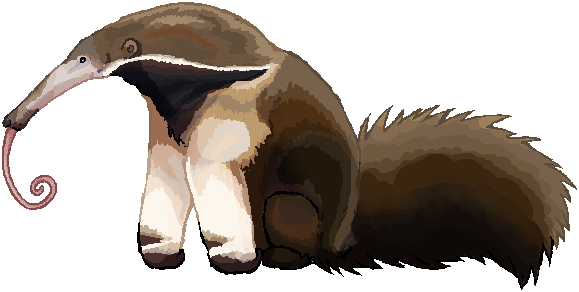Important Facts
About Anteaters
SCIENTIFIC NAME: Myrmecophaga tridactyla
TYPE: Mammals
DIET: Insectivore
AVERAGE LIFE SPAN IN
THE WILD:
14 years
What is the giant anteater?
Anteaters are eventuated animals—they have no teeth. But their long tongues are more than sufficient to lap up the 35,000 ants and termites they swallow whole each day. As the largest of all four anteater species, the giant anteater can reach eight feet long from the tip of its snout to the end of its tail. It is covered in grayish brown fur with white front legs, black stripes running from its chest to its back, and a bushy tail.
To find their prey, these animals are not guiding by sight - which in their case is scarce - but by smell. Anteaters are generally solitary animals.
Females have a single calf each year, which can sometimes be seen riding on its mother's back.
Although anteaters are not aggressive, they can become very violent. A cornered example will stand up on its hind legs, using its tail for balance, and lunge at its attacker with its dangerous claws. The anteater's claws are about four inches long, and they are used to fighting off even pumas and jaguars.


Comentarios
Publicar un comentario